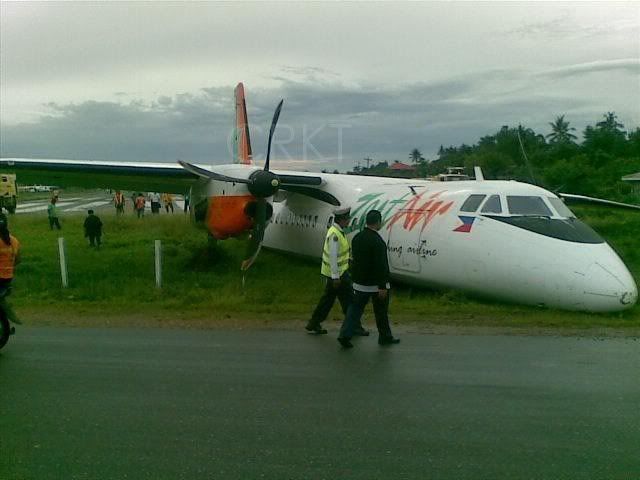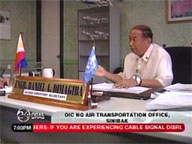
Written by Lenie Lectura
 UNDER pressure to cut costs, Philippine Airlines (PAL) on Monday vowed to look for ways to improve operations and control cost without compromising safety.
UNDER pressure to cut costs, Philippine Airlines (PAL) on Monday vowed to look for ways to improve operations and control cost without compromising safety.
In a speech at the Federal Aviation Authority (FAA) Maintenance Safety Seminar, PAL president Jaime Bautista said, “We try to be as innovative as the other carriers in countering the effects of the crises, but we will never cut corners on safety.”
The PAL official said safety consciousness is intrinsic to the airline’s operations. “It is part of our way of doing business. It is second nature to our staff, whether at the frontlines or the back office. We put a very high premium on safety compliance.”
PAL, said Bautista, has been included in the registry of airlines that passed the Iata (International Air Transport Association) Operational Safety Audit, or IOSA. “We therefore lay claim that PAL is the only Philippine-registered airline that is IOSA-certified, in compliance with Iata’s recent requirements for all its members.”
He stressed the importance of sharing the responsibility of promoting safety in order to survive the series of challenges plaguing the world today.
“Amid a rapidly changing aviation- industry landscape affected by the global economic slump, compounded by the A(H1N1) flu-virus pandemic and other dreadfully pernicious drawbacks, industry players are adjusting and adapting—just as we are—to be able to survive the overlapping crises,” he said.
This harsh industry environment has prompted some airlines to take bold and innovative measures. Bautista cited British Airways and Cathay Pacific, which both asked their
employees to take unpaid leaves or work with no pay. The chief executive and chief finance officer of British Airways are taking the lead by promising to work next month without withdrawing their salary.
Singapore Airlines, on the other hand, is implementing shorter work months and a freeze on wages, and is grounding 17 of their aircraft.
A number of US airlines are scrimping on their cabin service amenities. Northwest Airlines is reducing the number of available reading materials and snack items. Delta Air, American Airlines and Northwest have removed pillows from all domestic flights.
Delta has also been pushing for the use of automated, self-service check-in kiosks at airports instead of live agents. A study showed check-in kiosks cost airlines 16 cents a passenger, compared with $3.68 using ticket-counter agents.
Meanwhile, Emirates Airline redesigned its seats, taking away the foot rest, resulting in considerable aircraft weight reduction that translates to less fuel consumption.
“These manifest the perilous cost-cutting bandwagon that borders dangerously on safety issues of airline operations. I hope that through this FAA seminar, we can clearly distinguish those borders that should not be crossed,” said Bautista.
During the recent Iata annual general meeting, Giovanni Bisignani, its director general and CEO, said that last year’s total loss of airlines around the world reached more than $10 billion. For this year, he expects the total loss to reach $9 billion, due to falling demand, collapsing yields, broken consumer confidence and pandemic fears.
Total revenue of all airlines for this year is forecast to hit a staggering negative $80 billion, while the world’s jets and turboprop aircraft will consume a total of $106 billion worth of aviation fuel.
“Remember that before we faced the flu-virus pandemic, before the global financial crisis, we all got jolted by the all-time-high prices of fuel in the world market. The Association of Asia-Pacific Airlines [AAPA] echoed the gloomy observations of Iata when the AAPA reported an unprecedented 2.5 million fewer passengers who traveled on Asia-Pacific routes in the first two months of 2009,” said Bautista.
The PAL official hopes that gathering all key industry players in one venue to discuss maintenance safety is the right direction toward recognizing the responsibility they all share in promoting safety regardless of the economic environment.
“The fact remains that each of us has important roles to play in maintaining safe operations both in the air and on ground. Acquiring new insights or knowledge in this seminar will certainly be an important first step, no matter how trivial it may seem in the context of the global effort to promote air safety. The key to a successful cooperation of efforts at promoting safety is understanding the degree of complexity at which the aviation industry has evolved,” he said.
PAL is hosting the three-day seminar which aims to ensure uniformity in safety practices in civil-aviation maintenance.
Expected to attend are over 160 aviation-industry representatives from China, Japan, Korea, Malaysia, Guam, Taiwan, Singapore, Macau, Papua New Guinea and the Philippines. Two representatives from the American Embassy in Manila will also attend as observers.














